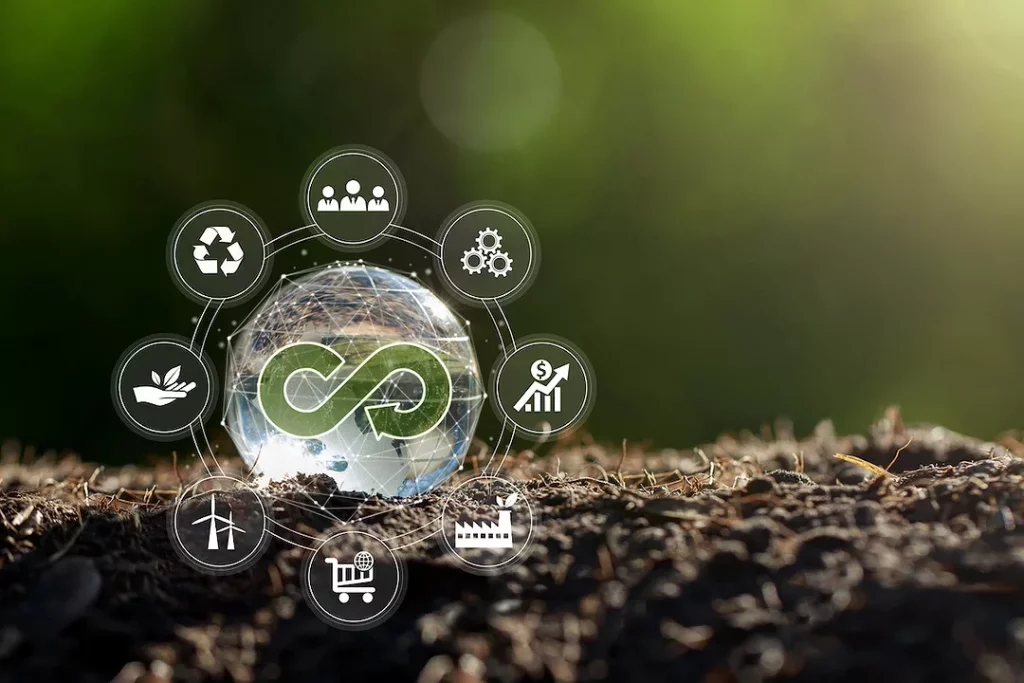In the contemporary business landscape, sustainability is no longer a niche concern. As the world faces unprecedented challenges—such as climate change, resource depletion, and growing social inequality—the need for businesses to adopt sustainable practices has never been more critical. Supply chains, as the backbone of global commerce, are at the center of this transformation. Companies are under increasing pressure not only to reduce their environmental impact but also to ensure that their supply chains are ethically sound and socially responsible.
This article explores the concept of a sustainable supply chain, focusing on the dual pressures of greening (environmental sustainability) and social responsibility (ethical practices). We will examine the key drivers behind this transformation, the strategies businesses are employing to align their supply chains with sustainability goals, and the challenges they face along the way.
1. The Growing Imperative for Sustainable Supply Chains
The push towards sustainability is being driven by a combination of regulatory pressure, consumer demand, investor expectations, and reputational risk. Global organizations are now increasingly required by governments to adhere to stringent environmental laws, particularly regarding carbon emissions, waste management, and resource usage. At the same time, consumers—especially Millennials and Gen Z—are becoming more conscious of the environmental and social impact of the products they buy, preferring brands that align with their values.
Investors are also taking note. ESG (Environmental, Social, Governance) factors have become a critical element of investment decisions, with a focus on long-term sustainability rather than short-term profits. Furthermore, the rise of social media and public scrutiny means that brands can no longer afford to ignore their environmental and social footprints without facing the risk of backlash.
The need for a sustainable supply chain arises as a solution to these pressures, providing companies with the opportunity to not only mitigate risks but also to innovate and differentiate themselves in a competitive market.
2. The Green Supply Chain: Moving Towards Environmental Sustainability
The green supply chain is defined as the integration of environmentally sustainable practices into every aspect of supply chain management, from product design and manufacturing to transportation and disposal. A green supply chain minimizes environmental impact by reducing waste, conserving resources, and decreasing carbon emissions.
Key elements of a green supply chain include:
2.1. Sustainable Sourcing of Materials
The first step toward a greener supply chain is sourcing raw materials that are renewable, recyclable, or environmentally friendly. For instance, instead of using virgin plastics, companies can opt for biodegradable or recycled materials. Similarly, in the agriculture and food industries, sourcing products from sustainable farming practices helps reduce the environmental footprint associated with harmful pesticides and unsustainable land use.
2.2. Energy Efficiency and Renewable Energy Use
Energy consumption in manufacturing and transportation contributes significantly to carbon emissions. Companies are now investing in energy-efficient technologies and transitioning to renewable energy sources such as wind, solar, and hydroelectric power. The use of green buildings with energy-efficient lighting, HVAC systems, and better insulation also plays a role in reducing the carbon footprint of a company’s operations.
2.3. Waste Reduction and Circular Economy Models
Reducing waste is another cornerstone of a green supply chain. Companies are now focusing on minimizing packaging waste, using recyclable materials, and optimizing their manufacturing processes to reduce by-products. Moreover, the circular economy model is gaining traction, which involves designing products for reuse, remanufacturing, and recycling to extend the lifecycle of materials. This approach not only conserves resources but also reduces the environmental impact of waste disposal.
2.4. Carbon Footprint and Emissions Reduction
A significant portion of a company’s environmental impact comes from carbon emissions. Businesses are increasingly adopting carbon accounting practices to measure and reduce their greenhouse gas emissions. This involves adopting strategies such as eco-friendly transportation, optimizing supply routes, and using low-emission vehicles and renewable energy in the production process. Many companies have even set ambitious goals to achieve carbon neutrality by a specific year, aligning with global climate goals such as those set by the Paris Agreement.
2.5. Sustainable Logistics and Transportation
Transportation is a major contributor to the environmental footprint of supply chains, given the heavy reliance on fossil fuels for moving goods. To mitigate this, companies are looking to reduce their transportation emissions by adopting more efficient logistics practices, such as route optimization, consolidating shipments, and shifting to electric vehicles (EVs). Innovations in drone delivery and autonomous electric trucks also show great promise for reducing carbon emissions in the long term.

3. Social Responsibility in the Supply Chain: Ethical and Fair Practices
While environmental sustainability has garnered much attention, social responsibility is equally important in creating a truly sustainable supply chain. Social responsibility in supply chain management refers to the ethical treatment of workers, fair trade practices, human rights, and contributing positively to local communities. It involves creating a supply chain that benefits not only the company but also the people and communities involved.
Key elements of socially responsible supply chains include:
3.1. Ethical Sourcing and Fair Labor Practices
The use of child labor, unsafe working conditions, and exploitation of workers in the supply chain are issues that many companies are actively addressing. Ethical sourcing ensures that the products or raw materials are sourced from suppliers who adhere to fair labor practices, provide safe working conditions, and pay fair wages. Companies are increasingly adopting Code of Conduct policies and requiring their suppliers to comply with social and ethical standards, often as part of certification programs like Fair Trade.
3.2. Human Rights and Transparency
Human rights violations in supply chains, such as forced labor and human trafficking, remain a major concern. Companies are now under pressure to ensure that their supply chains are free from such practices. Supply chain transparency is vital to identifying potential risks and ensuring that every tier of the supply chain adheres to human rights principles. Technology, particularly blockchain, is playing a significant role in increasing transparency, making it easier to trace products to their origins and verify ethical sourcing practices.
3.3. Community Engagement and Empowerment
Social responsibility extends beyond the treatment of workers to the broader community in which the company operates. Businesses are increasingly involved in community development programs, supporting local economies, and improving education and healthcare in the regions from which they source. Corporate Social Responsibility (CSR) initiatives that aim to improve the quality of life for local populations—through investments in infrastructure, schools, or healthcare—are becoming integral to a company’s sustainability strategy.
3.4. Diversity, Equity, and Inclusion (DEI)
An inclusive supply chain also ensures that diversity and equality are promoted not only within the company but also with suppliers. Many companies are actively working to create more inclusive supply chains by partnering with minority-owned businesses, women entrepreneurs, and small local producers. This helps to create a more diverse and equitable global economy and empowers marginalized communities.
4. The Challenges in Achieving Sustainable Supply Chains
Despite the growing commitment to sustainability, there are significant challenges that businesses must navigate to create truly sustainable supply chains:
4.1. Cost Implications
One of the most immediate challenges of creating a sustainable supply chain is the cost involved. Green technologies, ethical sourcing, and certification processes all come with upfront costs, and many companies may hesitate to make the necessary investments. However, as consumer demand for sustainable products rises and as regulations tighten, the long-term savings and benefits—such as increased consumer loyalty, reduced waste, and operational efficiency—are beginning to outweigh these initial costs.
4.2. Supply Chain Complexity
Global supply chains often involve numerous suppliers, manufacturers, and logistics providers, each with its own set of environmental and social practices. Ensuring that all these players align with sustainability goals can be a complex task. Moreover, some regions may not have the regulatory frameworks or infrastructure to support sustainable practices, making it difficult to enforce ethical sourcing and environmental standards across the entire supply chain.
4.3. Lack of Standardized Metrics and Regulations
The lack of standardized metrics for sustainability is another hurdle. While there are various certifications (e.g., Fair Trade, LEED, ISO 14001), these often differ across industries and regions, leading to confusion and inefficiencies. The absence of a global, unified framework for measuring sustainability makes it difficult for companies to consistently evaluate and compare their performance.
4.4. Supply Chain Disruptions
Global supply chains are vulnerable to various disruptions, from natural disasters to political instability. These disruptions can impede the ability of companies to maintain their sustainability goals. For example, a natural disaster may delay shipments of sustainable raw materials, or political unrest may cause ethical labor practices to be overlooked in certain regions.
5. The Path Forward: How Businesses Can Create Sustainable Supply Chains
Creating a sustainable supply chain is a long-term commitment that requires collaboration, transparency, and continuous improvement. Here are a few strategies that businesses can implement to move towards sustainability:
5.1. Collaborate with Stakeholders
Sustainability requires a collective effort. Businesses must collaborate with suppliers, regulators, NGOs, and even competitors to create an ecosystem that supports sustainable practices. Collaborative platforms and industry partnerships can help share knowledge, create common standards, and foster innovation in sustainable supply chain solutions.
5.2. Use Technology to Drive Sustainability
Adopting emerging technologies such as blockchain, IoT, and artificial intelligence (AI) can significantly enhance a company’s ability to track, measure, and optimize its sustainability efforts. These technologies can increase supply chain transparency, improve energy efficiency, and enable predictive analytics to reduce waste and emissions.
5.3. Commit to Continuous Improvement
Sustainability is a journey, not a destination. Businesses should regularly review and refine their sustainability goals and practices. Setting
clear, measurable targets and reporting progress transparently can help companies stay on track and demonstrate their commitment to sustainability to consumers, investors, and regulators.
6. Conclusion: The Future of Sustainable Supply Chains
In the face of growing environmental challenges and social expectations, businesses can no longer afford to ignore sustainability. A green, socially responsible supply chain not only reduces environmental impact but also drives long-term business success by building consumer trust, reducing operational risks, and fostering innovation. The dual pressures of greening and social responsibility are reshaping global supply chains, pushing companies towards a more sustainable future. While challenges remain, the opportunities for growth, differentiation, and positive impact are immense for those willing to embrace the transition towards sustainability.

















































